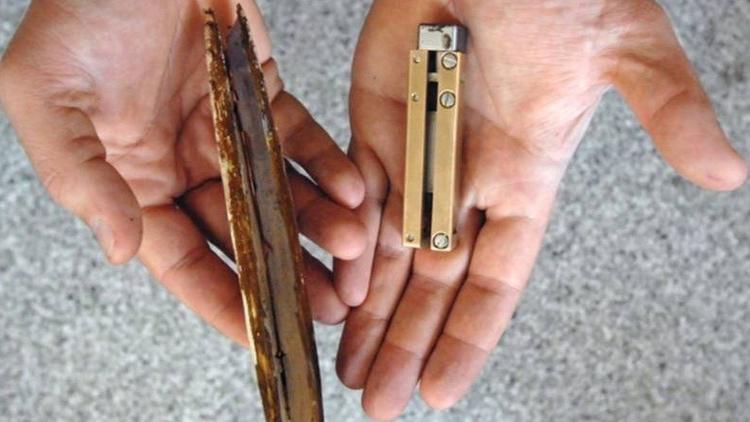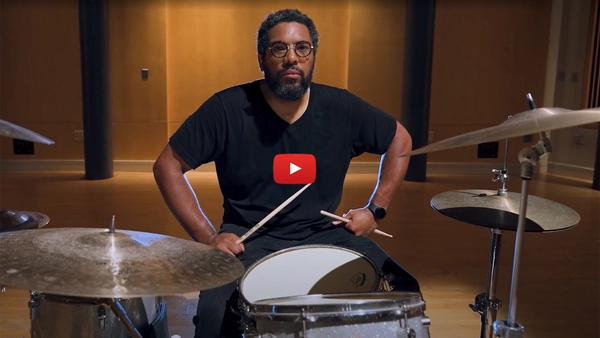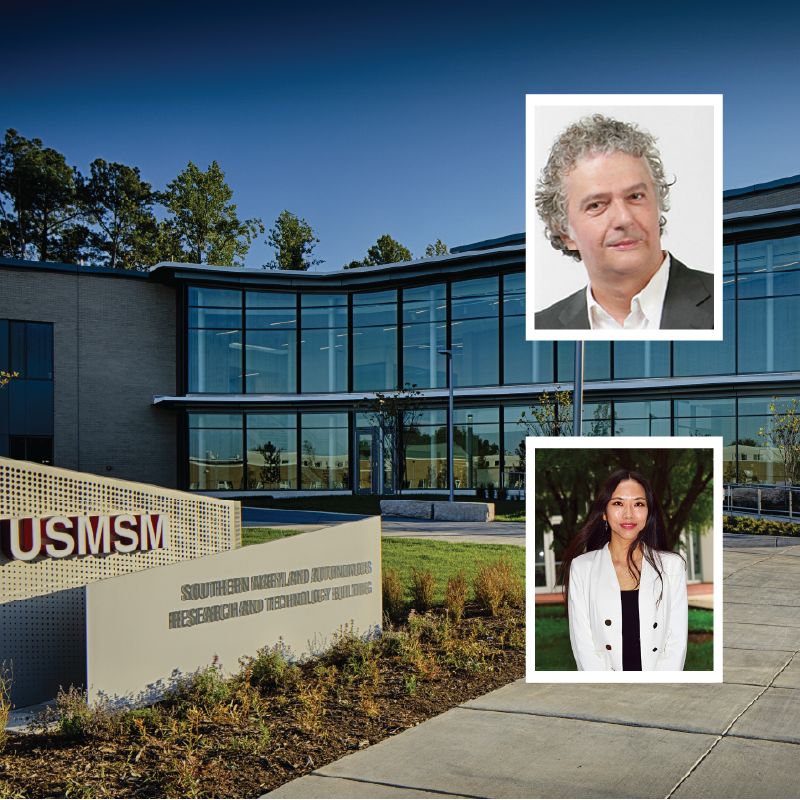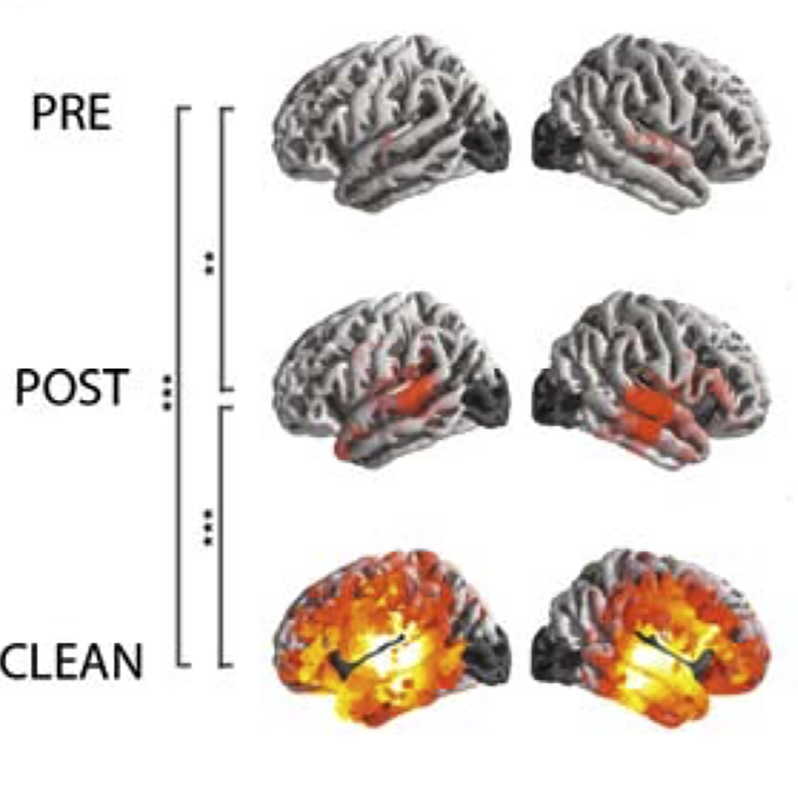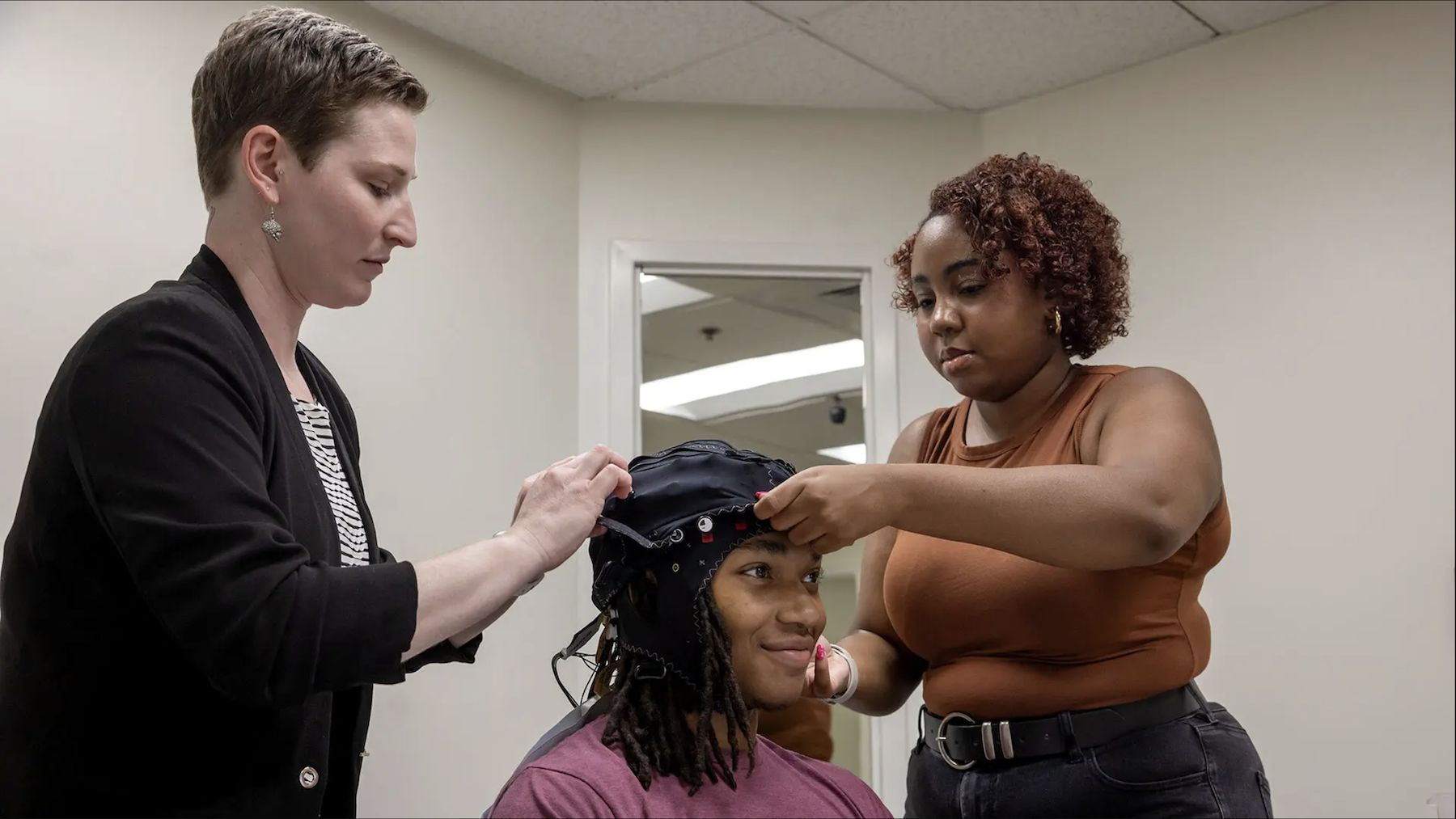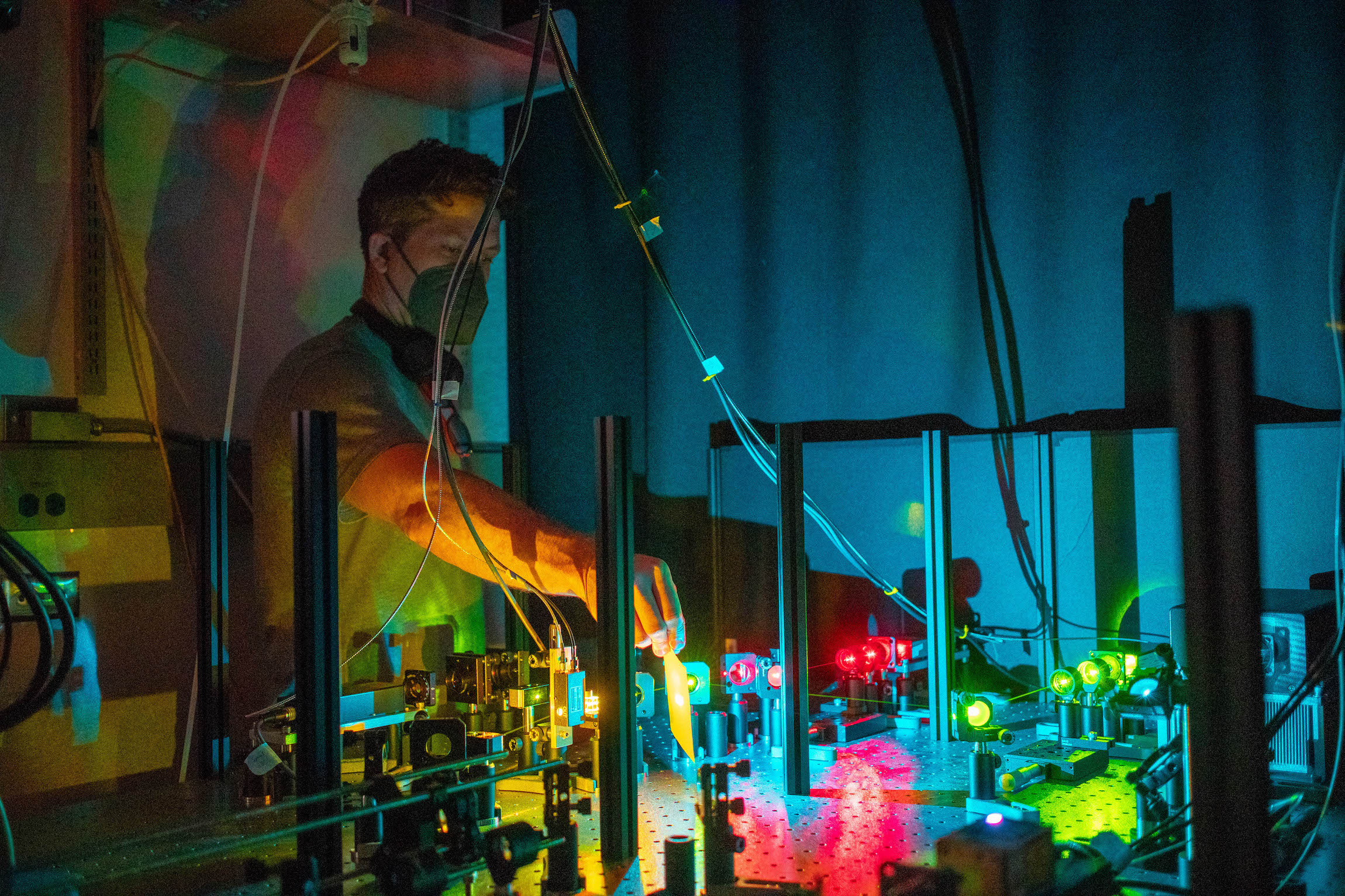News Story
Wolfgang Losert and colleagues open door to measuring, engineering cell behaviors
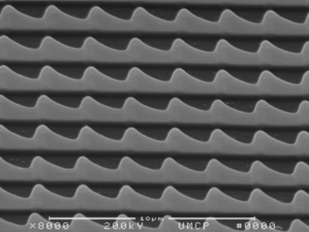
Nanoscale sawtooth-patterned surfaces, such as this one seen at 8,000x magnification, can guide the motion of cells in a preferred direction, according to new research at the University of Maryland.
Biologists have known for centuries that cells change shape to move, divide, and interact with other cells. But it has been harder to figure out exactly how cells do this. For the first time, a team of biophysicists at the University of Maryland and the National Institutes of Health has determined why the texture of external surfaces plays a huge role in cells’ ability to react to their environment. Much like a car requires pavement with just the right level of roughness, cells propel themselves forward more efficiently over surfaces covered in nanoscale patterns.
Nanoscale sawtooth-patterned surfaces, such as this one seen at 8,000x magnification, can guide the motion of cells in a preferred direction, according to new research at the University of Maryland. Image credit: J. Fourkas/W. Losert (click image to download hi-res version.)
Nanoscale sawtooth-patterned surfaces, such as this one seen at 8,000x magnification, can guide the motion of cells in a preferred direction, according to new research at the University of Maryland. Image credit: J. Fourkas/W. Losert (click image to download hi-res version.)
The results, which appear September 28, 2015, in the online early edition of the Proceedings of the National Academy of Sciences, describe new nanoscale-patterned surfaces that can guide cells to move in specific directions, over nearly limitless distances. The textured surfaces are covered with tiny sawtooth-shaped features oriented in the same direction. Each sawtooth is much smaller than a cell and has a gently sloping surface on one edge, with a steep drop on the opposite edge. Similar surfaces could one day help in the development of new nanotechnology applications, such as highly effective wound dressings and stents that can accelerate the healing process.
The researchers studied movement in the single-celled amoeba Dictyostelium discoideum, as well as in human white blood cells. Both cell types responded to the sawtooth-patterned surface, suggesting that many species might share this need for textured surfaces on which to move.
“The fact that this mode of guidance works in both primitive and highly evolved cells suggests that cell guidance is important across all living things,” said co-author John Fourkas, Millard Alexander Professor in the Department of Chemistry and Biochemistry and the Institute for Physical Science and Technology at UMD.
The team looked at a protein called actin, which forms chains that make up a cell’s flexible internal skeleton. Among their findings, the team determined that nanoscale features, such as the sawtooth patterns described above, can guide the disassembly and reassembly of these actin chains, which in turn can propel the cell in a preferred direction of motion.
“Imagine a cell as a mosh pit that has a large rubber band surrounding the group of dancers,” said study co-author Wolfgang Losert, a professor of physics at UMD with joint appointments in the Institute for Research in Electronics and Applied Physics and the Institute for Physical Science and Technology. “The dancers represent the actin proteins and the rubber band represents the cell membrane. The dancers in the pit shove against each other, which in turn pushes against the rubber band, changing the shape of the mosh pit.”
A single-celled amoeba, Dictyostelium discoideum, can be seen moving along a row of nanoscale sawtooth-shaped features that can guide the cell’s motion in a preferred direction—in this case from left to right. The red dye shows chains of actin, a protein that makes up the cell’s internal skeleton and enables the cell to change shape. Image credit: J. Fourkas/W. Losert (click image to download hi-res version.)
Cells use their actin chains to move away from toxic chemicals, or toward nutrients and other beneficial signals. The chemical signals that normally cause cells to move are only effective if they are close enough and strong enough for the cell to react. To continue the mosh pit analogy, these chemical signals will attract the cell in the same way that loudspeakers attract a mosh pit full of dancers.
“One way to get the mosh pit to move in a given direction is to put the speakers where you want the dancers to go,” said Fourkas. “This scenario is similar to the chemical signaling that directs motion in biological systems. This is a powerful mechanism, but it can only work over a limited distance. If the speakers are too far away, the dancers in the mosh pit can’t hear the music.”
The new sawtooth surfaces provide a foothold for the cell’s internal skeleton, allowing the cell to move in one direction, over distances limited only by the size of the sawtooth surface.
“Imagine that the dance floor is composed of rows of sawteeth about the size of someone’s foot. It is easy to move up the gently sloped side of the sawtooth, but it is hard to move in the other direction against the vertical edge of the sawtooth,” Losert explained. “As soon as someone starts moving along a row of sawteeth, the people nearby will start to do the same. In this manner, features on the floor that are much smaller than the mosh pit can still cause the group of dancers to move in a preferred direction.”
The sawtooth surface passively prevents the cell from moving in the opposite direction. But Losert, Fourkas and their colleagues also demonstrated that a cell’s actin chains actively engage with each sawtooth, thus guiding motion in a specific direction. Each sawtooth is much smaller than the cell, so as soon as a cell clears one sawtooth, the cell’s actin fibers will already be engaged with the next several sawteeth down the line. This allows the cell to cover nearly limitless distances, so long as it has uninterrupted access to the sawtooth surface.
“This discovery shows that we can design patterned surfaces that can control cell behavior through manipulation of actin chains,” Losert added. “This capability opens the door to measuring and engineering cell behaviors through similar patterned surfaces, which will have many potential biomedical applications.”
In addition to Losert and Fourkas, UMD-affiliated co-authors include Chemistry and Biochemistry Postdoctoral Associate Xiaoyu Sun, former graduate student Meghan Driscoll (Ph.D. ’13, physics), former graduate student Can Guven (Ph.D. ’14, physics), and IREAP Assistant Research Scientist Satarupa Das.
This research was supported by the National Institutes of Health (Award No. R01GM085574). The content of this article does not necessarily reflect the views of these organizations.
The research paper, “Asymmetric Nano/Microtopography Biases Cytoskeletal Dynamics and Promotes Unidirectional Cell Guidance,” Xiaoyu Sun, Meghan Driscoll, Can Guven, Satarupa Das, Carole A. Parent, John Fourkas and Wolfgang Losert, was published September 28, 2015 in the online early edition of the Proceedings of the National Academy of Sciences.
September 28th, 2015
Published September 28, 2015
